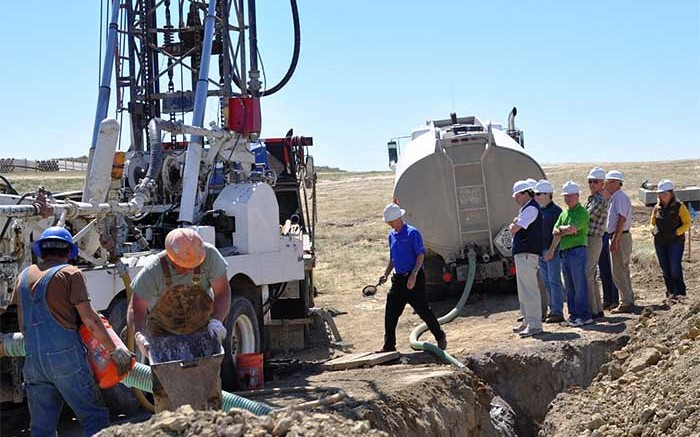An encouraging feature of today’s mineral industry is that it’s not bad news across the board, as a few subsectors — such as diamonds and nickel — have seen strong price increases and renewed investor interest this year.
Well, now we can add uranium to the list. After a pretty much continuous price decline since March 2011 and the Fukushima nuclear disaster in Japan, prior to which spot prices for uranium oxide prices had peaked above US$70 per lb., the spot price on Nov. 10, 2014, jumped US$5 to US$41.75 per lb. as tallied by UxC, and well up from the desultory sub-US$29 level seen from May through July.
It’s a major reversal of a three-and-half-year downtrend, and puts the spot price back where it was at the end of 2012.
The reason for the surge, of course, is the decision by the government of Japan’s Kagoshima Prefecture to reopen two nuclear reactors early next year. These two reactors at the Sendai Nuclear Power Plant are among the 48 reactors in Japan that went offline during the Fukushima disaster and have remained idled.
Since that fateful day, nuclear power generation in OECD countries has contracted by 16%; however, some rebound is expected in the years ahead as Japan reopens its dormant reactors, and China comes through on its plans to ramp up its nuclear power generation. Worldwide, some 70 reactors are under construction and more are planned, with India and Russia also intent on growing their nuclear power output.
Owing to the extensive long-term purchase commitments that uranium producers enter into with nuclear power utilities, the spot price of uranium oxide is less important than for many other metals. For instance, industry leader Cameco took in an average realized price of US$46.14 per lb. U3O8 in the first nine months of 2014, down 5% from the US$48.72 per lb. seen a year earlier, even with the average spot price at US$31.90 and US$39.21 per lb. over those two periods.
But the spot price still affects Cameco’s bottom line. In its latest quarterlies, Cameco noted in its sensitivity analysis that a change of US$5 per lb. in both the Ux spot price (US$36.50 per lb. on Oct. 27, 2014) and the Ux long-term price indicator (US$45 per lb. on Oct. 27, 2014) would change revenue by C$20 million and net earnings by C$8 million for the rest of 2014.
This latest jump in uranium oxide prices builds on the 25% gain into the mid-US$30 range enjoyed by producers during the third quarter. This gain in August and September was caused by several factors, including market speculation about sanctions imposed on Russia relating to the Ukraine crisis, possible interruption in the disposition of U.S. Department of Energy inventory and reduced supply from Cameco’s McArthur River/Key Lake operation owing to labour disruption.
Even if not a lot of uranium is sold based on the spot price, it is still a leading indicator of the general health of the uranium-mining industry. And so this 14% jump in Ux spot prices on Nov. 10 had an electrifying effect on pure-play uranium mining stocks. Since the first few days of November, Cameco’s stock is up 17%; Denison Mines has soared 28%; Paladin Energy is 25% higher; explorer Fission Uranium is up 34%; Uranium Participation Corp. has advanced 10%; and so on.
In the broader picture, the uranium market has shifted in recent years from one dominated by overhanging inventories that were being liquidated by commercial and military interests to one where utilities are genuinely concerned about securing long-term supply as these one-off liquidations end and new demand emerges in China, India and Russia.
This change is positive for uranium oxide prices, and a tonic for the hardy uranium miners and explorers who survived the tough times after Fukushima.




Be the first to comment on "Editorial: After three long years, uranium has its day"